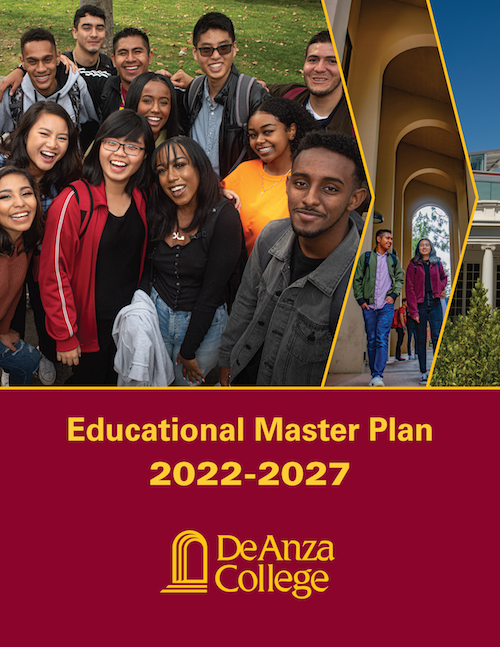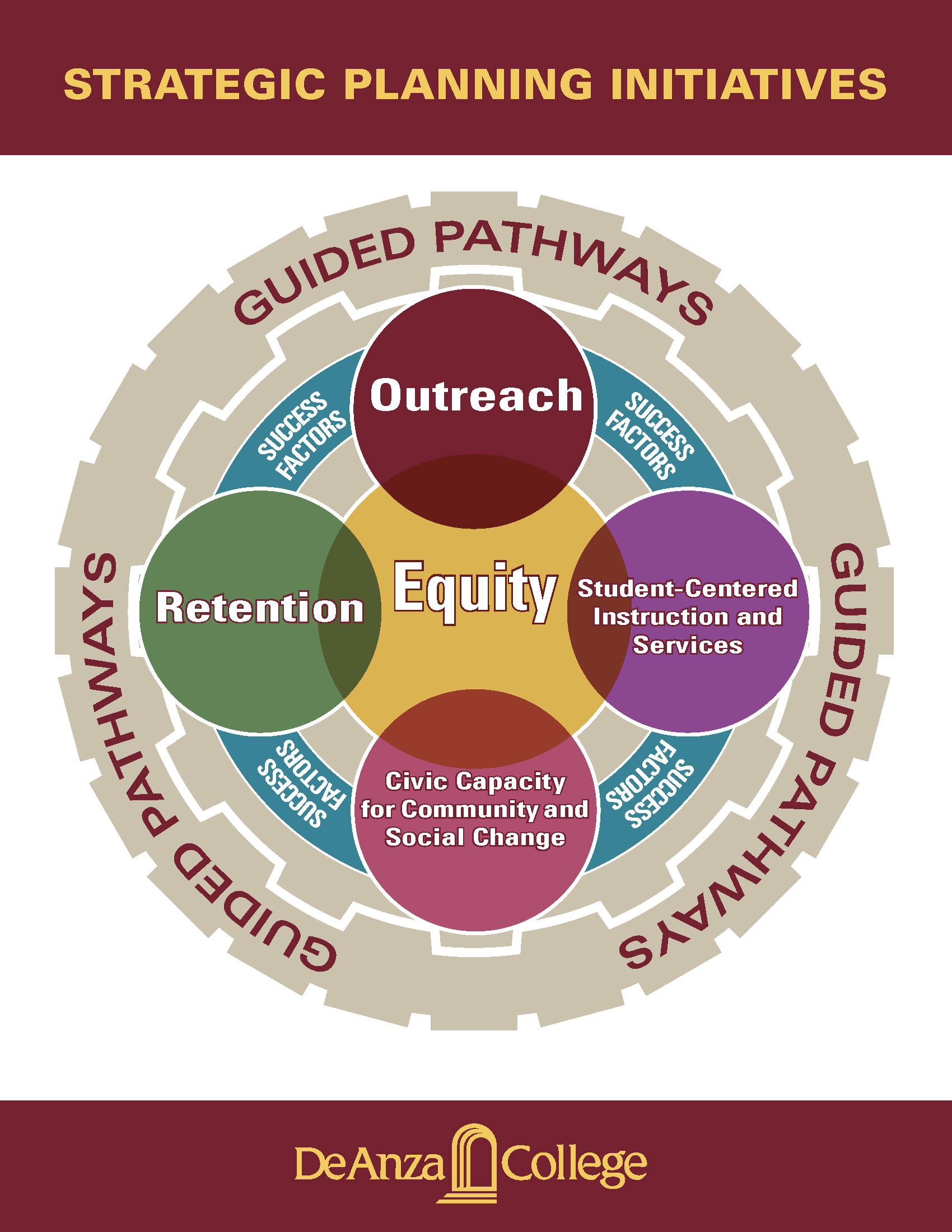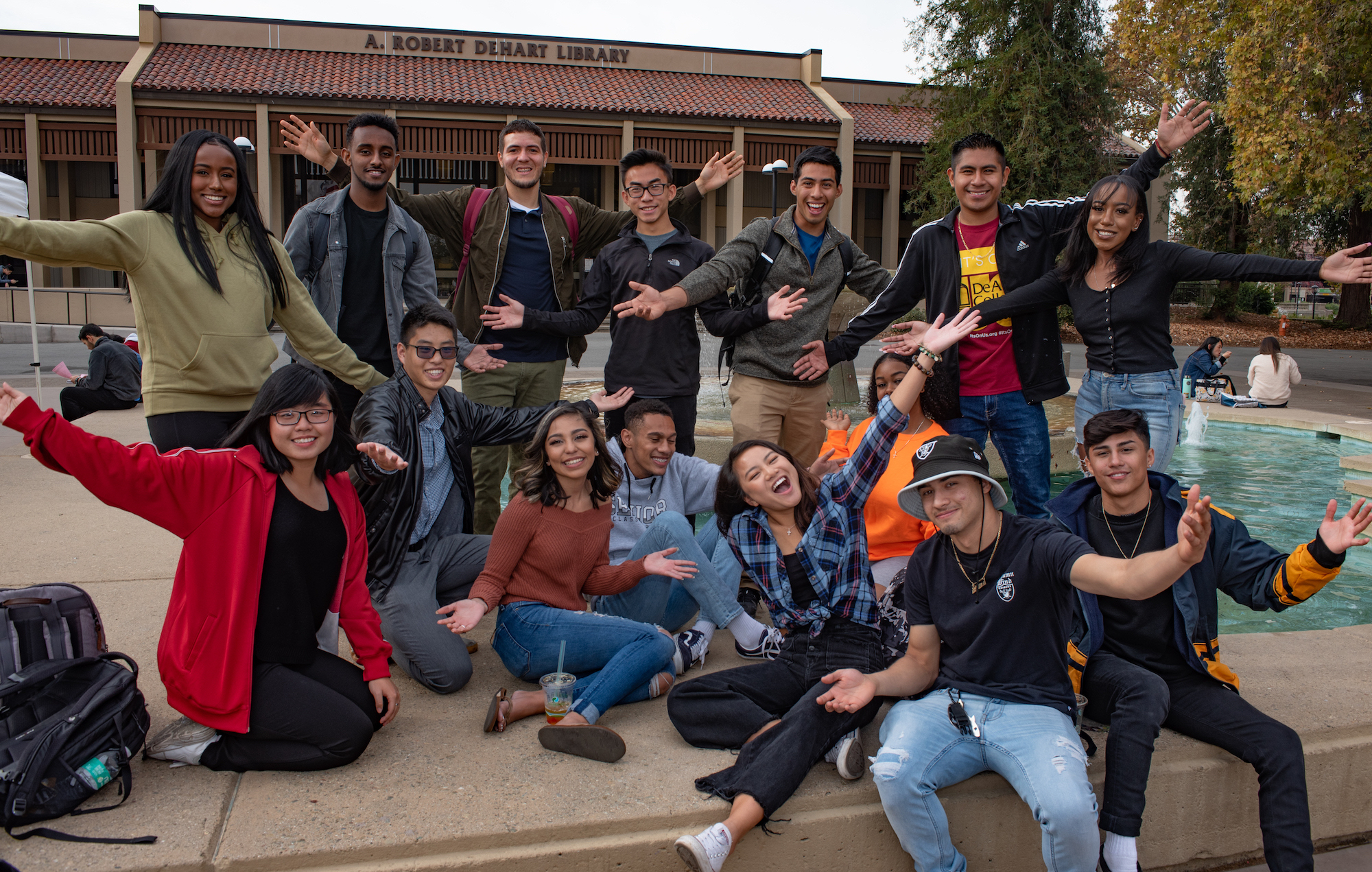Educational Master Plan: 2022-2027
 De Anza's Educational Master Plan lays out a five-year road map for the college, along with specific goals and metrics for measuring progress.
De Anza's Educational Master Plan lays out a five-year road map for the college, along with specific goals and metrics for measuring progress.
It was developed through a collegewide strategic planning process that examined De Anza's enrollment, programs and outcomes, along with demographic trends identified through the Silicon Valley Index and other sources – all viewed through an equity lens.
The plan identifies four institutional initatives that will frame efforts to increase enrollment and improve outcomes for key student population groups, while drawing on the important work of De Anza's Student Equity Plan and Guided Pathways initiatives to achieve cultural and structual change. It includes specific measures to mitigate enrollment declines resulting directly from declining birth rates in the region.
The EMP is the culmination of a year-long process initiated in fall 2021 by College Council. Three tri-chairs were named to coordinate the effort:
- Lydia Hearn, English Instructor and former Interim Associate Vice President, Instruction
- Mallory Newell, Director, Institutional Research, Planning and Accreditation
- Marisa Spatafore, Associate Vice President, Communications and External Relations
De Anza is now engaged in a collegewide implementation process that will take place throughout the current academic year and beyond. To learn more about this effort, visit the Strategic Planning Implementation website.
Institutional Initiatives

The EMP includes four key initiatives under the umbrella of Guided Pathways and the six student success factors – based on findings that students succeed when they are focused, nurtured, engaged, connected, valued and directed – with equity at their core:
- Outreach
- Student-Centered Instruction and Services
- Retention
- Civic Capacity for Community and Social Change
This effort builds on on foundational initiatives adopted in earlier strategic planning processes, and incorporates ongoing transformational processes across the campus.
Institutional initiatives have resulted in campuswide improvements in many areas and have become part of the institutional culture of the college. Separately, they each add value, but collectively, they become what the college is as an institution, and reflect its deepest commitment to students. These initiatives will continue to drive efforts for the next five years.
Here are the four intiatives and some relevant examples.
Outreach
- Early engagement – e.g., middle school and high school partnerships and pathways
- Continued outreach to geographical locations with historically low college-going rates
- Outreach to pockets of potential enrollment growth, including adult learners
Student-Centered Instruction and Services
- Professional development and support for classroom teaching (e.g., AB 705 support, high-impact practices)
- Support for all employees in equity work (e.g., financial commitments, support for classified professionals)
- Visioning and streamlining collegewide practices (e.g., enrollment management, curriculum, stacked certificates)
- Staffing to support wraparound services (e.g., foster youth counselor, social worker)
Retention
- Expanded focus to include nontraditional students (e.g., foster youth, part-time students)
- Support for basic needs and mental health (e.g., centralized services, intrusive messaging, focus groups
- Proactive intervention strategies (e.g., focus groups, student fines, student employment) with a particular focus on student populations that have lower persistence rates, and on retention for spring quarter, which has seen lower persistence rates than winter
- Greater connections between major and career options (e.g., internships, pathways to careers aligned with their major)
- Formal and informal mentorship opportunities (e.g., mentoring, tutoring)
Civic Capacity for Community and Social Change
- Community-based learning initiatives where the college is connected to and concerned about the well-being of the community and engaged in projects to develop those partnerships (e.g., internships, employment or volunteer opportunities within the community, community partnerships)
- Opportunities for students to develop their leadership capacity (e.g., peer mentor groups, tutoring, engaged learning classes, pay student government)
- Academic learning that helps students understand the histories, roots, and possible solutions to issues facing themselves and their communities
- Students and employees develop their capacity to make a difference on campus through shared governance and other pathways (e.g., orientation, mentoring, training)




